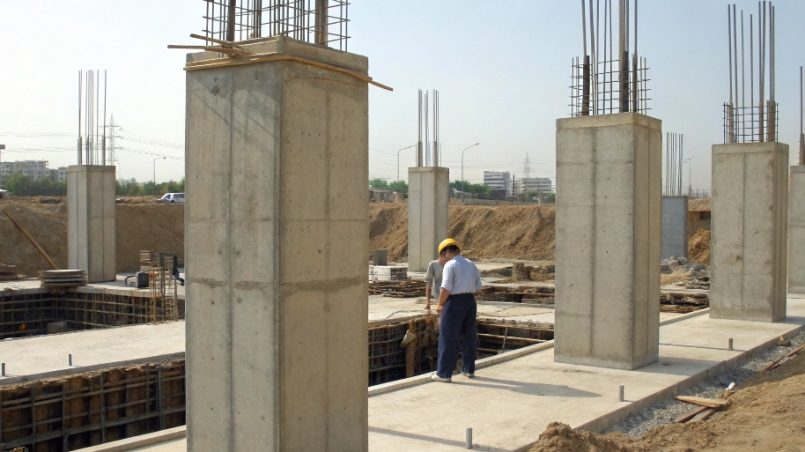Strong foundations don’t just happen—they’re planned, tested, and reinforced through layers of specialized systems. That’s especially true in government construction, where structural stability must endure heavy use, environmental extremes, and evolving infrastructure demands. From military bases to U.S. embassies, Nav Int builds stability from the ground up.
Modular Logistics Integration for Stable Foundation Support
Before the first scoop of earth is moved, logistics play a defining role. At Nav Int, modular logistics integration supports early-stage construction in environments that challenge traditional delivery schedules. For government construction sites across Asia, Europe, and Africa, flexibility and speed matter—especially where infrastructure is sparse or seasonal weather delays are common. Modular staging of equipment, materials, and crews ensures that foundation systems are delivered and installed without disruption.
By managing resources in a centralized but adaptive supply network, this International Construction Company avoids delays that might compromise foundation curing or soil stabilization timing. Foundations are only as strong as the sequence that builds them, and modular logistics provide the structure behind that structure. Global Construction projects benefit from this system’s ability to adapt to regional transport issues while still upholding U.S. engineering standards.
Engineering Oversight Ensuring Soil-bearing Capacity Compliance
Before concrete is poured or rebar is placed, soil conditions are studied and validated to meet government-grade safety metrics. Nav Int applies intensive geotechnical testing and engineering assessments to confirm that soil-bearing capacity meets strict thresholds. Government contracts often demand full documentation for subsurface performance—and Nav Int delivers those evaluations with on-site engineers and third-party validation.
This isn’t just about meeting specs. The company’s international construction experience has shown how underestimation of soil behavior in remote or unfamiliar climates can lead to structural failure years later. On every site, engineers supervise compaction, water drainage, and substrate reinforcement, ensuring foundations stay secure even in seismic zones, flood plains, or high-altitude builds.
Safety-trained Personnel Enforcing Structural Stabilization Protocols
People make or break the build. Nav Int’s approach relies on deploying teams with specialized stabilization training—not general laborers, but crews that understand how foundational integrity starts before vertical construction begins. On-site personnel follow pre-approved stabilization sequences, with job-specific safety certifications aligned with U.S. Army Corps of Engineers and NAVFAC expectations.
This level of discipline prevents cutting corners during critical phases such as trench reinforcement or concrete form placement. It also ensures that the people working in hazardous conditions remain safe while protecting the long-term viability of the project. In global construction zones with unique challenges—whether sandstorm-prone deserts or tropical wetlands—Nav Int’s teams operate with the same attention to safety and structural control as they do on domestic builds.
Federal-standard Construction Practices Tailored for Secure Foundations
What sets Nav Int apart in government construction is how it tailors U.S. federal construction standards to fit international environments. The stabilization techniques are not one-size-fits-all—they adapt the standards to materials, climates, and soil behaviors found across continents. This might mean modifying concrete mixes for freeze-thaw cycles in Europe or increasing subgrade layers in soft clay regions of Southeast Asia.
This tailored approach comes backed by strict compliance documentation. Every slab, footing, and anchoring system aligns with Department of State and DoD contract specs while factoring in the host nation’s conditions. The company’s ability to build to U.S. code, anywhere in the world, is key to its reliability as a government partner.
Sustainment Planning That Reinforces Government Infrastructure Longevity
Building for now is only part of the equation—Nav Int plans for the decades to come. Each foundation includes sustainment protocols that extend beyond turnover, ensuring structural elements resist settlement, erosion, and wear. Government clients expect facilities to stand strong long after mission changes or leadership shifts, and Nav Int’s stabilization techniques meet that demand.
This future-proofing includes waterproofing, sub-surface drainage, and post-construction monitoring protocols that reduce costly future repair. With experience building for embassies, military housing, and mission-critical installations, this global construction company understands the weight of permanence. Foundations aren’t just built to code—they’re built to last.
Integrated Procurement and Material Management Reducing Settlement Risks
Settlement issues often arise from inconsistent materials or poorly timed deliveries. Nav Int tackles this by synchronizing procurement and on-site usage through an integrated material management system. Sourcing materials like steel, concrete, or geotextile from vetted suppliers ensures consistency across builds, especially when working across multiple time zones and international borders.
Material quality control begins long before it hits the job site. Each shipment includes documentation for origin, specifications, and use cases—minimizing variability that could undermine structural integrity. This International Construction Company’s proactive sourcing strategy isn’t just efficient; it’s a protective measure against uneven curing, unstable fill, or unpredictable settlement, ensuring strong foundations for critical government structures.



